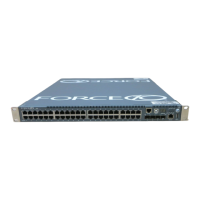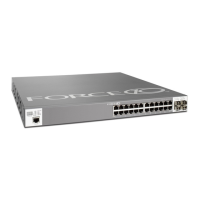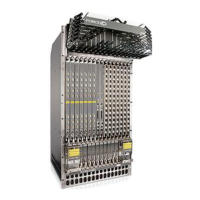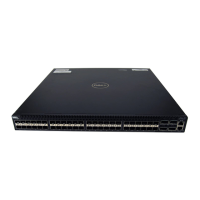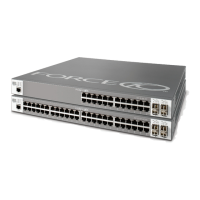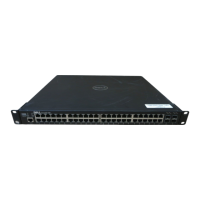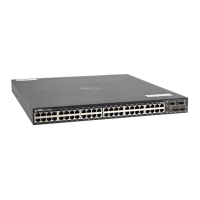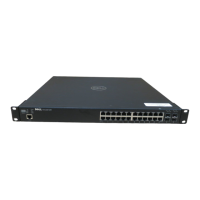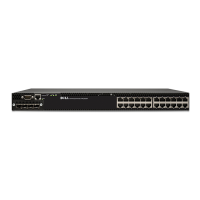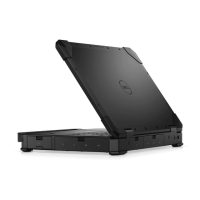Force10 Resilient Ring Protocol (FRRP) | 345
• Multiple physical rings can be run on the same switch
• One Master node per ring—all other nodes are Transit
• Each node has 2 member interfaces—Primary, Secondary
• No limit to the number of nodes on a ring
• Master node ring port states—blocking, pre-forwarding, forwarding, disabled
• Transit node ring port states—blocking, pre-forwarding, forwarding, disabled
• STP disabled on ring interfaces
• Master node secondary port is in blocking state during Normal operation
• Ring Health Frames (RHF)
• Hello RHF
— Sent at 500ms (hello interval)
— Transmitted and processed by Master node only
• Topology Change RHF
— Triggered updates
— Processed at all nodes
Important FRRP Concepts
Table 16-1 lists some important FRRP concepts.
Table 16-1. FRRP Components
Concept Explanation
Ring ID Each ring has a unique 8-bit ring ID through which the ring is identified (e.g. FRRP
101 and FRRP 202 as shown in Figure 16-2.
Control VLAN Each ring has a unique Control VLAN through which tagged Ring Health Frames
(RHF) are sent. Control VLANs are used only for sending Ring Health Frames, and
cannot be used for any other purpose.
Member VLAN Each ring maintains a list of member VLANs. Member VLANs must be consistent
across the entire ring.
Port Role Each node has two ports for each ring: Primary and Secondary. The Master node
Primary port generates Ring Health Frames (RHF). The Master node Secondary port
receives the RHF frames. On Transit nodes, there is no distinction between a
Primary and Secondary interface when operating in the Normal state.
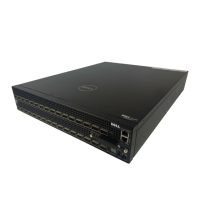
